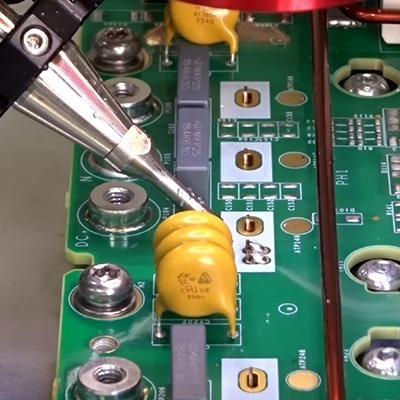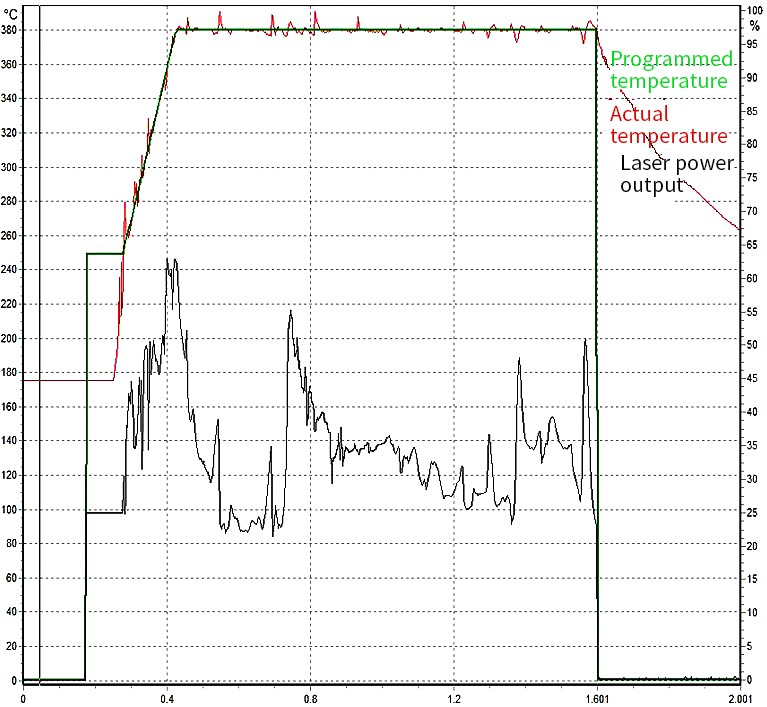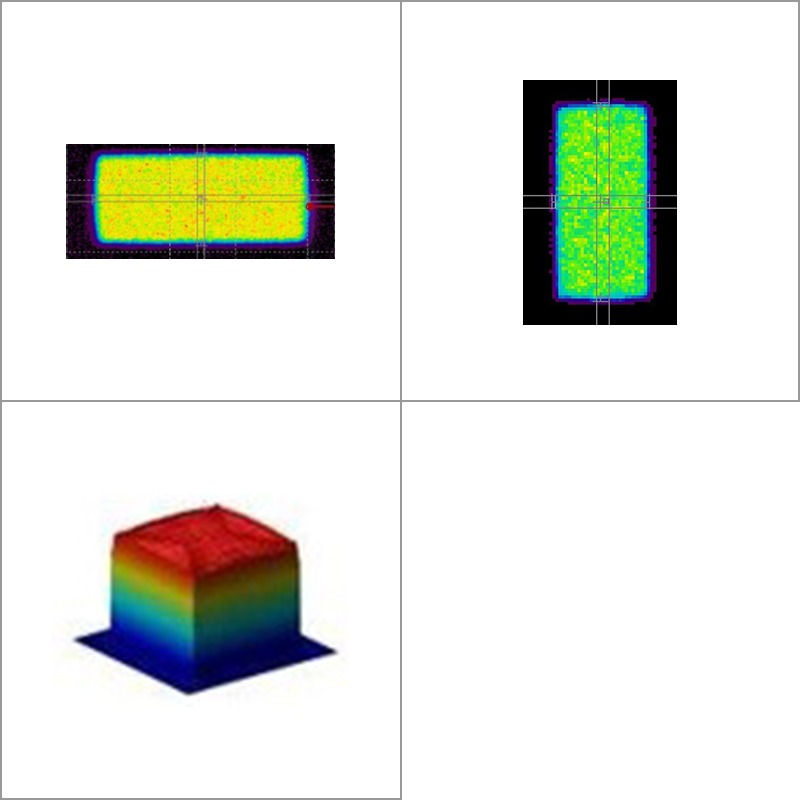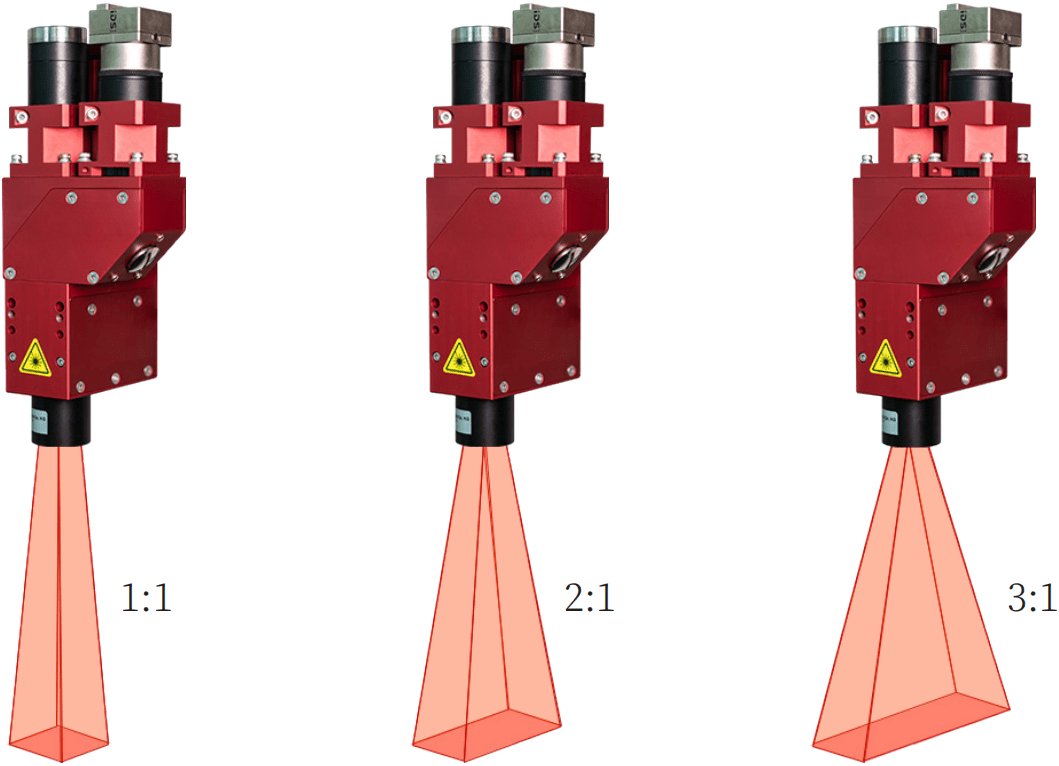Laser soldering technology, with its high energy density beam and micron-level heat-affected zone characteristics, has become a core process in the field of precision manufacturing. DYNALAS provides efficient and low-cost welding solutions for automotive camera manufacturing by innovatively integrating a closed-loop temperature control system and spot shaping technology, achieving a 97% optimization in substrate costs and 10μm-level tolerance control, thus promoting innovation in industry processes.

Products undergoing laser soldering.
1. Advantages of Laser Welding Technology
- High Precision and Low Deformation
The laser beam can be focused to a micron-level spot (weld seam of 0.1mm), resulting in a very small heat-affected zone, significantly reducing the risk of workpiece deformation, making it suitable for high-precision applications such as automotive camera chips. - Strong Material Adaptability
It can weld difficult-to-melt materials such as titanium alloys, quartz, and ceramics, and supports reliable connections between dissimilar metals (such as copper-aluminum) or non-metals. - High Efficiency and Deep Penetration
When the power density exceeds 10⁵ W/cm², the depth-to-width ratio can reach 10:1, and the welding speed is 5-10 times faster than traditional methods, making it suitable for thick plates and high-speed production lines. - Flexibility and Non-Contact Characteristics
By transmitting the laser beam through optical fibers, it can remotely weld complex structures or hard-to-reach components without direct contact with the workpiece, avoiding mechanical wear. - Automation and Environmental Friendliness
Supports fully automated production, requires no filler materials, and produces no waste gas or wastewater, meeting the demands of green manufacturing. - Environmental Adaptability
Can operate under special conditions such as vacuum, high temperature, or electromagnetic fields, and is not restricted by external conditions such as weather or temperature.
2. Core Advantages of DYNALAS Laser Welding Technology
- Fast and precise control of material surface temperature
By connecting the Lascon® controller with the laser, fast and precise control of the material surface temperature can be achieved.

The image shows how the laser adjusts its output power to achieve a preset temperature curve. In this case, it reaches a stable 300°C within 1.2 seconds.
- Uniform and diverse light spots
DYNALAS products feature a flat-top beam profile with high uniformity, and the beam profile is sharp, causing no damage to surrounding areas.

Uniform temperature rectangular beam profile and top-hat beam profile.
- Adaptive light spots
The products offer various shapes of light spots, including square and rectangular, with adjustable spot sizes; the spot sizes can be set to 1:1, 2:1, and 1:2

3. Optimization Results of DYNALAS Solutions for Automotive Camera Manufacturing
This solution utilizes a laser system composed of DYNALAS’s 10kHz monochrome LASCON high-temperature meter, a 200W laser, and an LH501 laser head, achieving significant improvements in the manufacturing process of automotive cameras.

①Significant reduction in process complexity
Replacing the three key steps of the adhesive bonding process (plasma cleaning, dispensing, curing) with a single laser welding operation reduces the investment and maintenance costs of production line equipment.
②Cost and tolerance control
- Substrate material costs reduced by 97%
- Optical path tolerance control < 10μm
- Supports higher operating temperatures
③Dual improvement in quality and efficiency
- Real-time temperature curve visualization, error ±5°C
- Shorter bonding speed
4. Multi-Industry Applications of Laser Welding Technology
DYNALAS’s laser soldering system is not only suitable for automotive manufacturing but can also be extended to the following scenarios:
- Microelectronics Packaging: 0.1mm level welding point precision, suitable for chip-level welding needs;
- Medical Devices: Titanium alloy welding with no thermal damage, ensuring the biocompatibility of implants;
- Aerospace: High-temperature alloy welding with a depth-to-width ratio of up to 10:1, meeting lightweight structural requirements.
 DYNALAS
DYNALAS